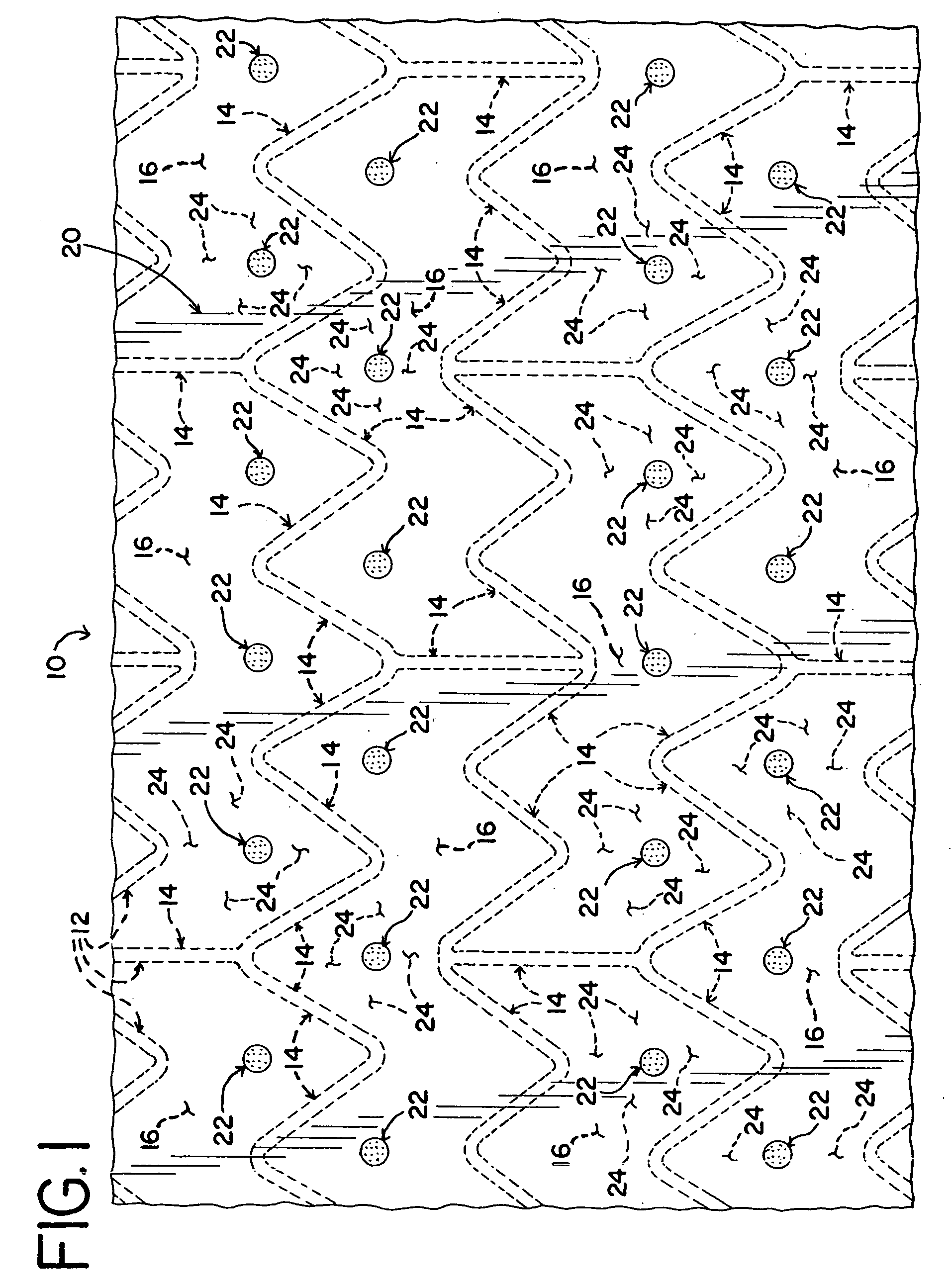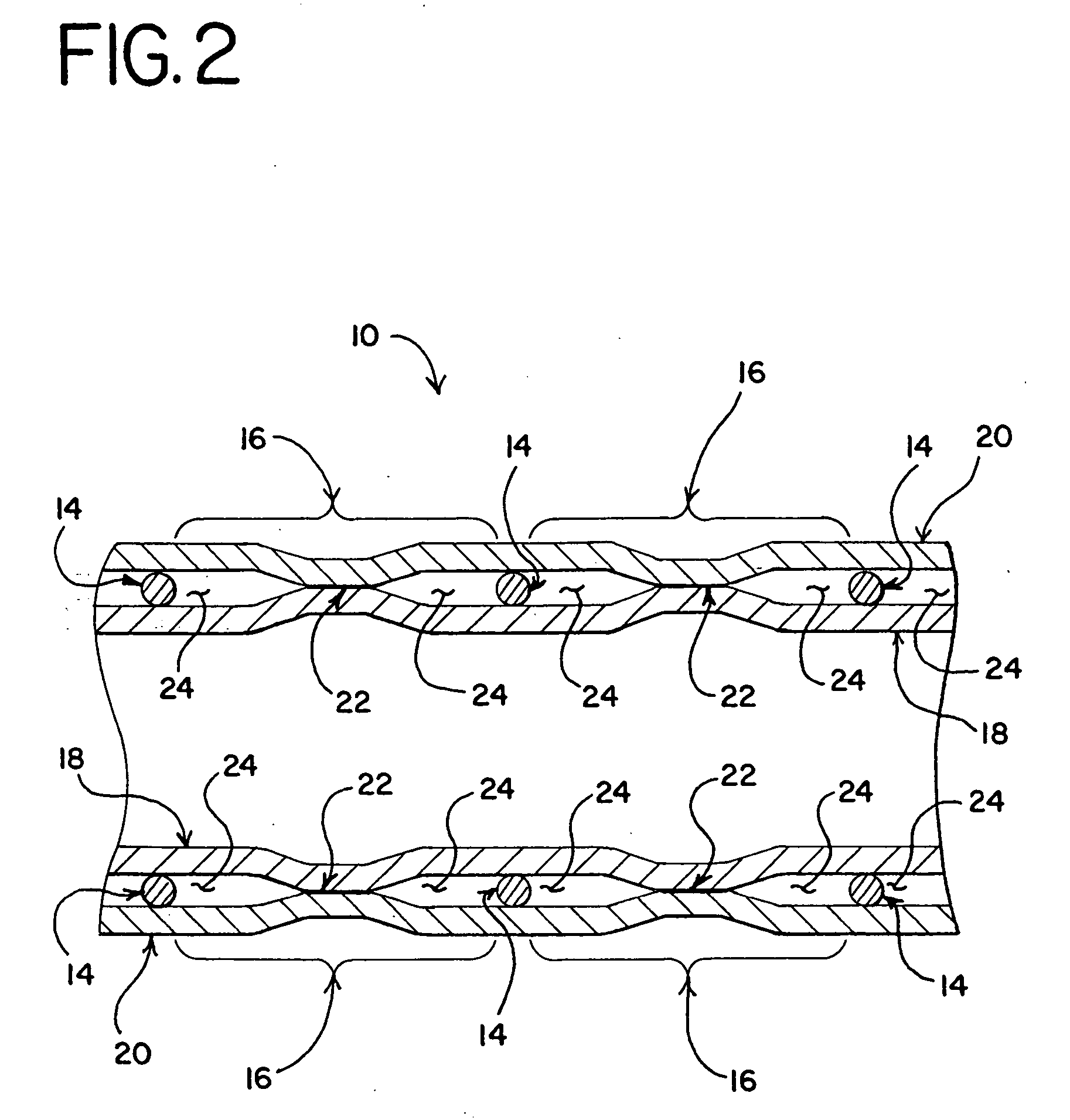Stent-graft with graft to graft attachment
a technology of graft and stent, applied in the field of stent assembly with graft layers, can solve the problems of patient death, internal hemorrhaging, and so much bleeding
- Summary
- Abstract
- Description
- Claims
- Application Information
AI Technical Summary
Benefits of technology
Problems solved by technology
Method used
Image
Examples
Embodiment Construction
[0017] Referring now to the drawings, a stent-graft assembly 10 is shown. The stent-graft 10 includes a stent 12 with an inner layer 18 of graft material disposed along the luminal surface of the stent 12 and an outer layer 20 of graft material disposed along the abluminal surfaces of the stent 12. As shown in the figures, it is preferable for the graft layers 18, 20 to cover the entire luminal and abluminal surfaces. However, it is also possible for the graft layers 18, 20 to cover only a portion of the stent 12.
[0018] Various types of stents 12 may be used with the invention. For example, stents may be made from numerous metals and alloys, including stainless steel, nitinol, cobalt-chrome alloys, amorphous metals, tantalum, platinum, gold and titanium. Stents may also be made from non-metallic materials, such as thermoplastics and other polymers. The structure of the stent may also be formed in a variety of ways to provide a suitable intraluminal support structure. For example, s...
PUM
 Login to View More
Login to View More Abstract
Description
Claims
Application Information
 Login to View More
Login to View More - R&D
- Intellectual Property
- Life Sciences
- Materials
- Tech Scout
- Unparalleled Data Quality
- Higher Quality Content
- 60% Fewer Hallucinations
Browse by: Latest US Patents, China's latest patents, Technical Efficacy Thesaurus, Application Domain, Technology Topic, Popular Technical Reports.
© 2025 PatSnap. All rights reserved.Legal|Privacy policy|Modern Slavery Act Transparency Statement|Sitemap|About US| Contact US: help@patsnap.com



